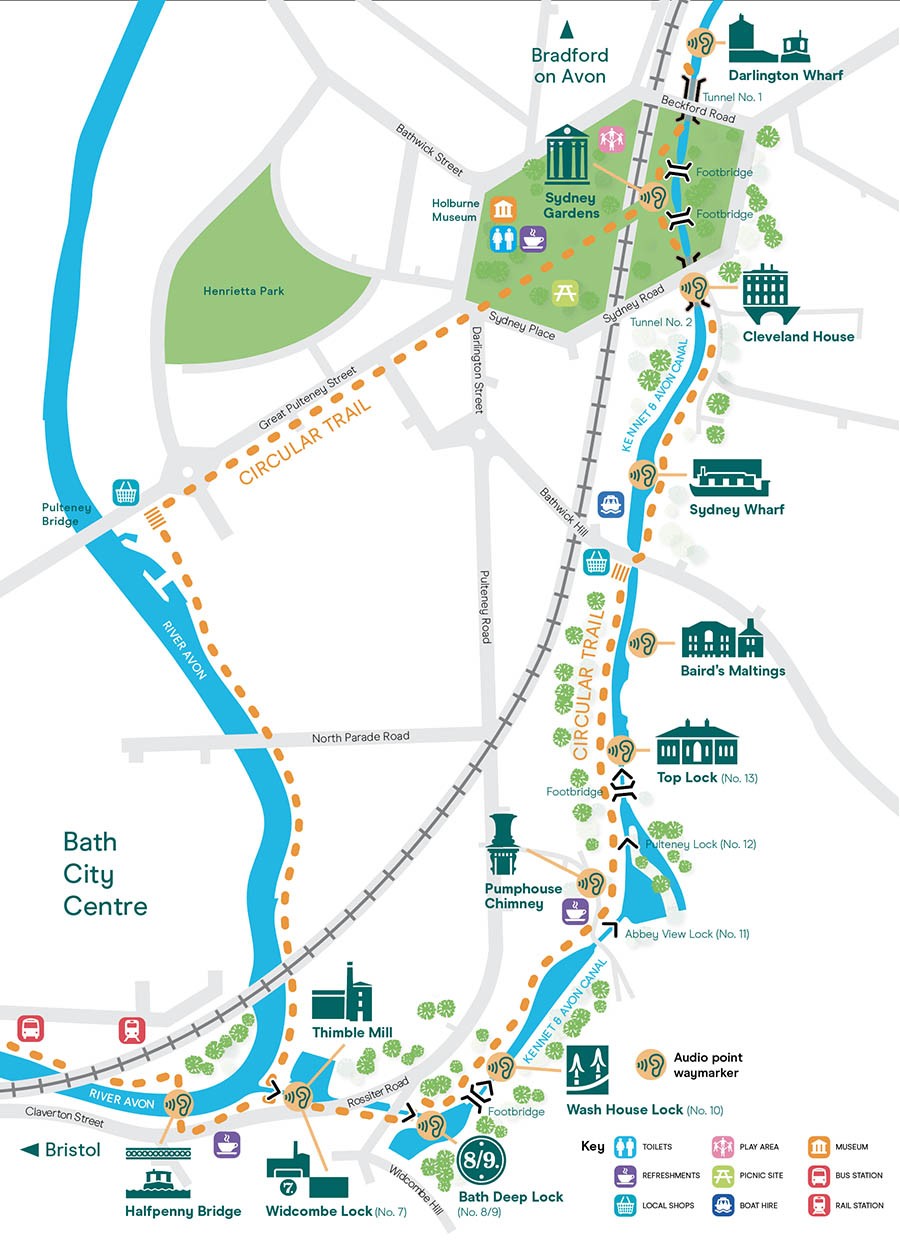Walk around Bath from Darlington Wharf
A two mile circular walk along the Kennet & Avon Canal in Bath, taking in Georgian architecture and many impressive local landmarks.

This circular canal and river trail links with the city centre and passes by the Holburne Museum and Pulteney bridge. It can be started at any point along the route. Enjoy the beautiful Sydney Gardens and iconic structures such as Cleveland House and the pumphouse chimney.
Audio trail
Don't miss our audio trail as you explore this historic canal. The audio trail covers a one mile length of canal and can be started at any point between Darlington Wharf to the east of Bath and the junction of the River Avon and canal via both the Bus and Train stations in the west.
Click on the links below to listen to our audio trail.

